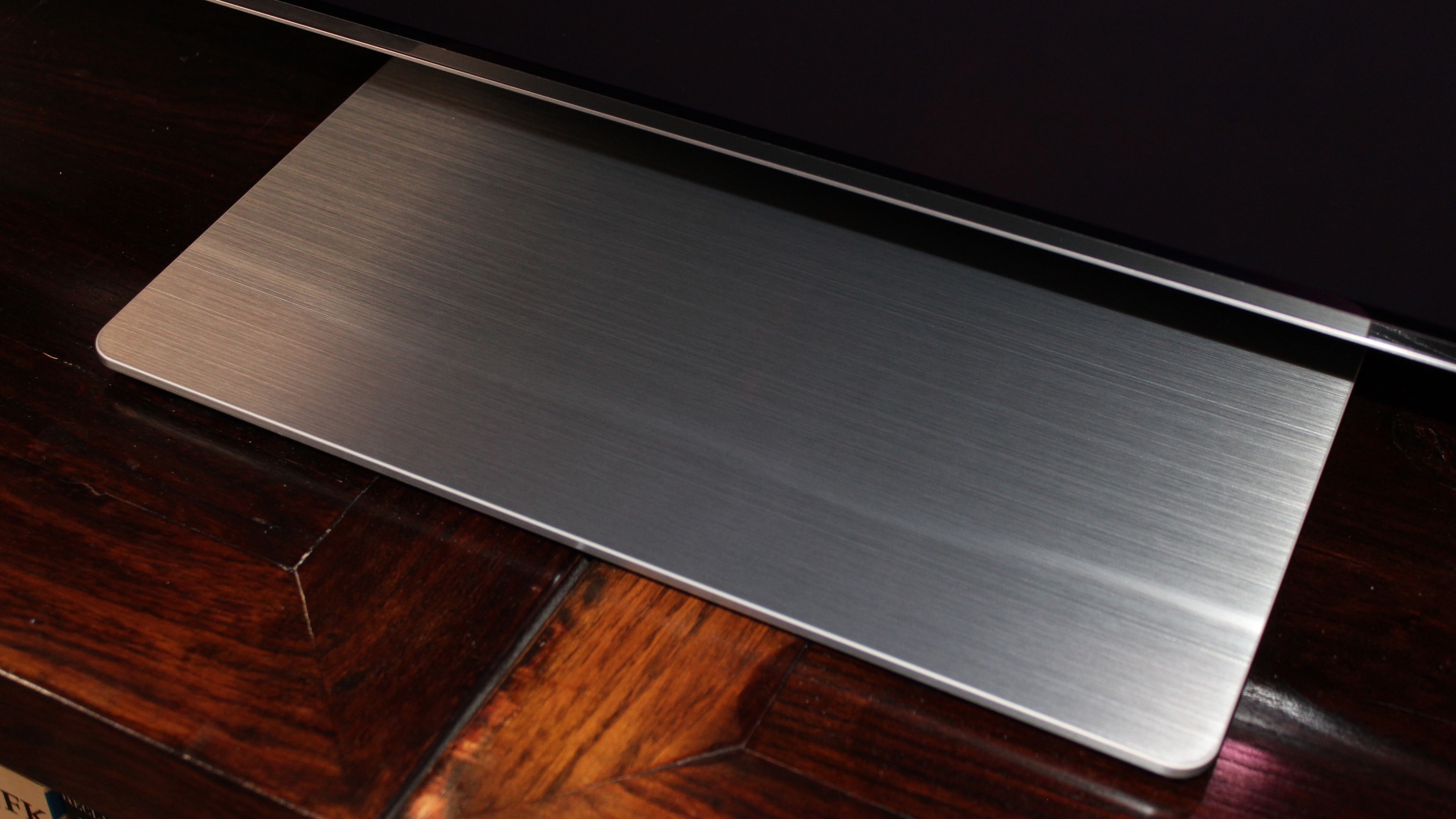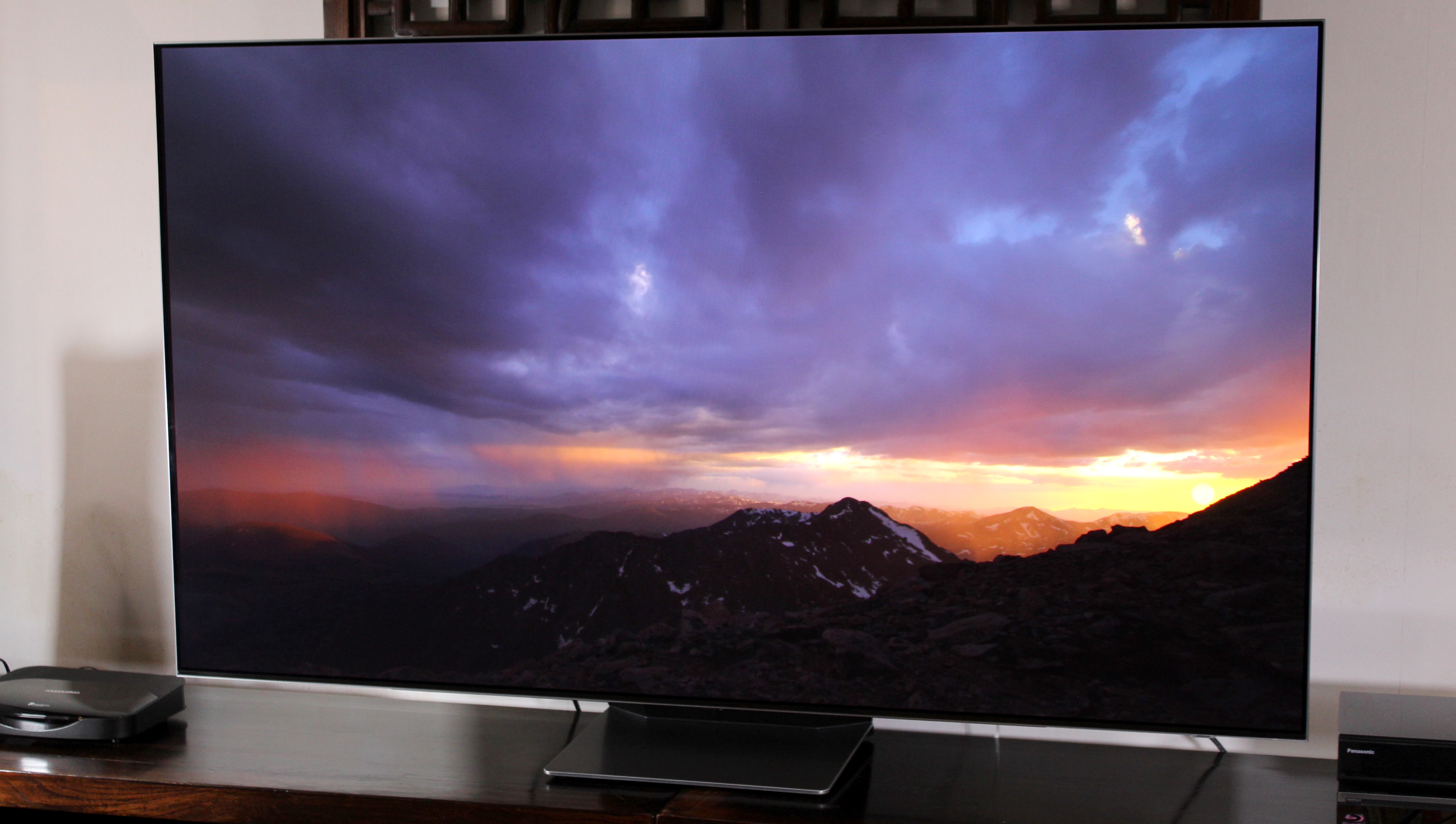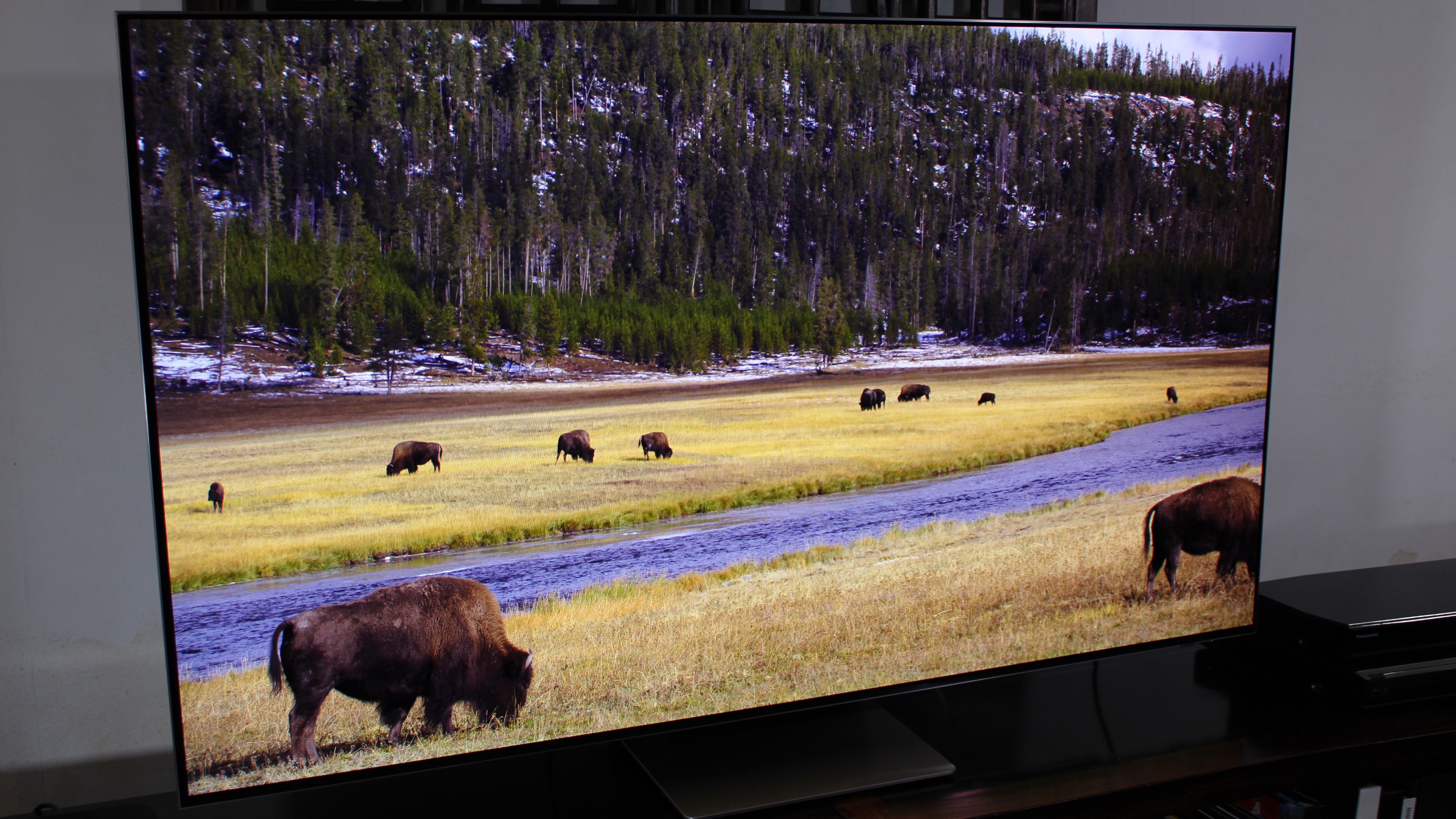Samsung S95B review: QD-OLED is simply astonishing
Quantum Dot OLED is here and in the Samsung S95B it's simply stunning


The Samsung S95B represents remarkable value for money, with awesome picture quality, a comprehensive smart system, and extensive gaming features. The sound could be better, and there’s no support for Dolby Vision, but otherwise this cutting-edge QD-OLED TV is hard to fault.
-
+
Stunningly bright images
-
+
A host of gaming features
-
+
Slim, eye-catching design
-
-
No Dolby Vision HDR
-
-
Sound could be better
Why you can trust T3

You’re probably thinking: a Samsung OLED TV, surely there’s some mistake? No, you read the title of this review correctly, because after a decade absent from the best OLED TVs, the Korean giant is back with a whole new twist on this well-established and highly popular display technology.
The Samsung S95B is based around the brand’s cutting-edge QD-OLED panel, which uses Quantum Dots to deliver richer colours and brighter highlights. You might expect such bleeding-edge tech to demand a premium, but thanks to some recent price drops, it’s actually a bargain from the off.
SAMSUNG S95B: PRICE & RELEASE DATE

The Samsung S95B is on sale now, available in two screen sizes: the 55-inch QE55S95B costs £1,249/$1,499; while the 65-inch QE65S95B (as reviewed here) retails for £1,699/$1,899.
Whichever side of the pond you call home, those are some seriously competitive prices, especially compared to Sony’s A95K, which uses the same panel. The widget below will show you updated pricing for both sizes.
SAMSUNG S95B REVIEW: FEATURES & WHAT’S NEW

The Samsung S95B’s big new feature is its use of the brand’s proprietary Quantum Dot OLED (QD-OLED) technology, although Samsung has rather quixotically decided to market its latest 4K HDR range as simply an OLED TV, with no mention of the underlying QD-OLED panel design.
So what is QD-OLED? Put simply, it’s a blue OLED that uses Quantum Dot layers (that explained here) to create the red and green sub-pixels. This approach eliminates the issue of the blue OLED decaying faster than red and green OLED, while also delivering brighter images and more precise colours.
The S95B’s picture and sound are powered by an upgraded 4K Neural Quantum Processor, and it runs the latest iteration of Samsung’s Tizen operating system. It also includes a Filmmaker Mode, and supports HDR10, HLG, and HDR10+ – but annoyingly there’s still no support for Dolby Vision (it's a Samsung, perhaps never expect it?).
Get all the latest news, reviews, deals and buying guides on gorgeous tech, home and active products from the T3 experts
The S95B sports an ultra-slim design, and the basic version of Samsung’s Object Tracking Sound system, but like the brand’s other 2022 TVs there’s Dolby Atmos decoding. All the major content streaming platforms are also present and correct, plus a host of next-gen gaming-related features.
SAMSUNG S95B REVIEW: PERFORMANCE

The Samsung S95B enjoys all the benefits you would normally associate with an OLED TV, but then builds on them to take the performance to another level. This results in colours that are bolder and truer, while the overall luminance and specular highlights are both significantly brighter.
The Filmmaker Mode delivers highly accurate pictures right out of the box, ensuring the SDR performance immediately impresses with natural-looking colours, fine detailing, deep blacks, and well-rendered shadows. The S95B is sure to please the most demanding of videophiles.
This assured delivery also applies to HDR (high dynamic range), where precise tone-mapping guarantees fidelity when it comes to reproducing the darkest shadows or the brightest highlights. The absence of any crush in the blacks or clipping in the whites produces a picture with remarkable levels of contrast.
The S95B can hit 1000 nits of peak brightness with ease, and the self-emissive nature of OLED ensures these blinding highlights are delivered with pixel precision. The resulting pictures retain a wonderful sense of realism, while the new panel also produces brighter full-screen images.
The use of Quantum Dots generates colours that are purer and more subtle, and when combined with the increased luminance the result is HDR that hits you between the eyes with plenty of pop. The S95B also achieves this without sacrificing accuracy, thus retaining the original artistic intent.
The 4K Neural Quantum Processor combines with the superior contrast and enhanced colours to create 4K images that are full of detail but free of any distracting artefacts. As a result, the S95B can upscale or enhance lower-resolution or compressed content with remarkable precision.

The motion handling is also excellent, which means movies and TV dramas delivered at 24p benefit from movement that is rendered without any unwanted judder or artefacts. There’s extra processing for fast-paced sports if necessary, and support for 120Hz higher frame rate (HFR) gaming.
The panel uniformity is excellent, with no signs of banding or other issues, and in testing there were no problems with image retention or screen burn. Finally, the self-emissive nature of OLED means the contrast and colours continue to look stunning if you’re watching from an angle.
The Samsung S95B sounds surprisingly good considering its size-zero measurements, but given the limited amount of space for speakers, this TV only uses the basic version of Samsung’s Object Tracking Sound technology. That means no height speakers or powerful woofers.
Overall the soundstage is well-balanced, with clear dialogue and a sense of spatial awareness that gives the audio more dimensionality. However, Dolby Atmos will never sound genuinely immersive like it can in a separates system, and the amplification runs out of steam at high volumes, resulting in some distortion.
The sound system is fine for general TV viewing, but if you want greater scale and deeper bass, you should invest in one of the best soundbars for Samsung TVs. If you decide to do this, the S95B includes support for Q-Symphony, allowing it to seamlessly integrate with any compatible Samsung soundbar.
To test the Samsung S95B we used Portrait Displays Calman colour calibration software
SAMSUNG S95B REVIEW: DESIGN & USABILITY
The S95B is a breeze to setup, with Samsung’s SmartThings app taking you through the entire process. The Tizen-powered smart system is comprehensive in its choice of video streaming apps, and while it can be sluggish, the layout ensures you can always find what you’re looking for.
Samsung provides two remote controls: a standard black plastic zapper; and a stripped down metal wand that uses solar-power for recharging, thus making replacing batteries a thing of the past. There’s also voice control thanks to the inclusion of Bixby, Alexa, and Google Assistant.
The design is eye-catching, with a panel that’s only millimetres thick, and minimalist stying that looks very contemporary. The ultra-slim chassis is a little wobbly, but once attached to the stand the TV is more robust. Just be careful when moving it, or attaching to a bracket for wall mounting.

An extensive choice of connections includes four HDMI inputs – all of which support 4K/120Hz, HDR10, HLG, HDR10+ Adaptive, and ALLM, plus eARC on HDMI 3. There’s also support for variable refresh rates (VRR), including AMD Freesync and Nvidia G-Synch, which is great news for gamers.
In fact this is an ideal TV for gamers, not just because of all those features, but also because of an incredibly low input lag of 9ms. There’s a useful Game Bar that brings all the key controls into a single interface, along with a new Game Hub that offers a choice of streamed gaming services.
SAMSUNG S95B REVIEW: VERDICT

The Samsung S95B is a stunning all-round performer, and a triumphant return to the OLED market. The Quantum Dot-powered panel lives up to its billing, delivering exceptional images that are bright, accurate and colourful, resulting in some of the best HDR seen on an OLED TV.
The blacks are awesome and the shadows richly detailed, while OLED’s pixel-perfection delivers super-bright and incredibly precise specular highlights. The motion handling is impressive, while a host of cutting-edge features ensures the S95B is a perfect choice for next-gen gamers.
The design is eye-catching, although the panel is so thin that it feels rather fragile. Since there’s limited space for speakers, the sound could be better, but there’s still Dolby Atmos. The operating system is a little slow, too, but it offers a comprehensive selection of streaming apps and smart features.
Overall, the S95B marks an impressive return to the OLED TV market for Samsung. It offers a winning combination of design, class-leading technology and features; and thanks to some recent price drops, the S95B is also a bargain compared to Sony’s competing A95K QD OLED.
Also consider
The obvious alternative is Sony’s A95K, which uses the same Samsung-made QD-OLED panel. It sounds better thanks to Sony’s Acoustic Surface technology, and there’s support for Dolby Vision, but there’s also a hefty price premium compared to the S95B. The A95K delivers some of the best images you’ll see from a TV this year, but the Samsung gets damn close and for a lot less.

Steve Withers is a professional calibrator and freelance journalist who regularly contributes to T3, reviewing audio and video products, and writing articles. Steve has been writing about audio and video products for over ten years and, along with T3, he also contributes to TechRadar, Trusted Reviews, Expert Reviews, AVForums, Pocket-lint, Home Cinema Choice, and Wired. Steve is Level 2 certified with THX, the Imaging Science Foundation (ISF) and the Home Acoustics Alliance (HAA). As such, he remains abreast of all AV technology developments and the latest industry standards as we transition into a new era in home video and audio.